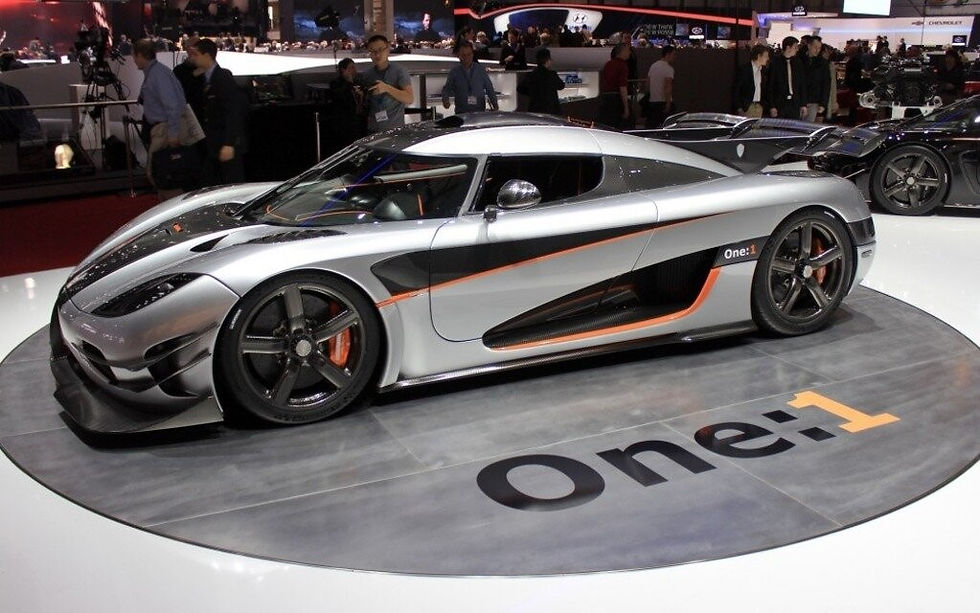Torque V/S BHP, Know them
- webtheinquisityclu
- Oct 21, 2020
- 3 min read
Most individuals have an idea of what the strength of an engine is, but are hazy on precisely what the figure of torque reflects. In fact, the effects of strong torque rather than high power output are seen by many cars that feel powerful.
It would be relaxing to drive an engine that produces a lot of torque over a large range of engine speeds because fewer gear changes are required: the torque of the engine is always sufficient to accelerate the car without switching down. A torquey 'engine would not need to be turned over very quickly at cruising speeds because it can pull at high gearing, which allows for a good economy.

~(Stock 210whp vRS boosted up to 335whp with APR mods)
A fairly typical small family car engine puts out, say, 60bhp (brake horsepower) at 5000rpm. The same engine can be tuned or modified so that it gives 80bhp at 6000rpm. But although the power is greater, the peak torque can actually be less, as well as occurring at higher engine speed. There will be less torque at low and medium engine speeds.
In other words, while a vehicle with a tuned engine would have a higher maximum speed, it would only accelerate faster as long as the gearbox was used to maintain the speed of the engine, assuming that the gearbox remained the same. In fact, to stay drivable, the highly tuned car would almost definitely need to be geared differently-the gears would need to be more closely spaced and the overall ratio slightly lower.

~(Power to weight ratio- 1360 bhp : 1360 kg)
Torque/bhp balance
The balance between power and torque has to be kept in mind by every engine designer. If enough drivers recognized the meaning of torque and the generalization that power versus aerodynamic drag determines maximum speed, he might even shift the balance a little away from power and towards torque, but torque versus weight determines acceleration.

~(Dragster’s tyres taking extreme load under heavy torque)
As the car speeds up, forces other than weight work on it to try to resist this acceleration, such as aerodynamic drag, rolling resistance of the tyres, and friction between the engine and transmission. These drag forces equal the driving force of the engine, or torque, at a certain speed, and there is no excess power left for more acceleration. That’s when one says, the engine is out of breath.
Measuring power
The power of an engine is determined by running the engine on a dynamometer against a load. The torque is generated by the braking effort required to keep the engine at a steady speed at full throttle. Multiplying the torque by the engine rpm, the power can then be measured. The standard technique for engine testing is to operate the unit on a 'brake' or dynamometer that tests torque over a wide range of speeds by seeing how much braking effort is required to sustain the engine at full throttle at a steady pace

~(vRS 2018 on a dyno post boost)
The torque times the velocity of the piston, called brake horsepower (bhp), then provides the power output. Power measured like this is expressed as power output at the flywheel, with the engine on a testbed. A rolling dyno is used to calculate power. Although the results will be lower it will still be more effective as it simulates the situation a vehicle faces on daily basis and it is coined by the term “wheel horsepower”.

~(Nissan GT-R R35 VR38DETT V6 on a rolling dyno)
Gearing
When looking at power and torque, changes in gearing are important, since the gears act as multipliers of torque. If the first gear has a 3:1 ratio, it multiplies the torque output of the engine by three as it is passed on to the final drive. Similarly, the final drive ratio, usually about 3.5:1, multiplies as much again with the torque from the gearbox.
Therefore, the torque transmitted to the driving wheels in the first gear will be about ten times higher than the torque output of the engine, while the rotation speed would be decreased by a similar factor. This gearing down is important because its weak torque at low speed is one of the main disadvantages of a piston engine.
Still if anyone doesn’t understand what bhp and torque are. In layman terms, bhp is how fast u hit a wall and torque is how far you take the wall away. A car requires more power to go faster, a truck requires more torque to haul loads.
(image source: Google)

Gaurav Chakraborty
R19ME015




Comments